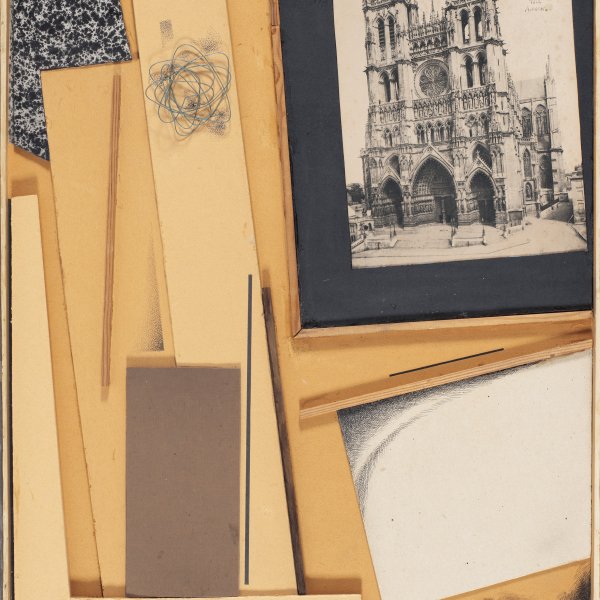Yurii Annenkov
Petropavlovsk, 1889-Paris, 1974
Born in Siberia, where his family was in exile, Yurii Annenkov moved to Saint Petersburg as a child. In 1908 he enrolled at university and attended the workshops of Savely Zeidenberg and Yan Tsyonglinsky, where he came into contact with avant-garde artists such as Matvey Vol’demar and Mikhail Matyushin. From 1911 to 1912 he lived in Paris and worked at the studios of Maurice Denis and Félix Vallotton.
In 1913 Annenkov returned to Saint Petersburg, where he soon turned towards abstraction, though he did not join any particular group of artists and continued to show a certain fondness for decoration. In 1919 he developed an interest in collage, a medium in which he produced numerous works, and worked intensely as an illustrator of both magazines, such as Satirikon and Argus, and books on varied themes, prominent among which is Alexander Blok’s revolutionary poem Dvenadtsat (The Twelve, Saint Petersburg, 1918). In parallel with this activity he produced portraits which combined interest in the sitter’s physique with a fragmentation of the picture space inherited from Cubism and Constructivism. During this period he painted portraits of foremost figures such as Leo Trotsky.
Annenkov spearheaded the resurgence of the World of Art group between 1922 and 1924 and was involved in establishing the Society of Easel Painters. He worked as a stage designer for theatres in Moscow and Petrograd (now Saint Petersburg) and designed, among other pageants, the celebrations staged in 1920 to commemorate the 1917 Revolution in the streets of Petrograd and the re-enactment of the storming of the Winter Palace, which involved some seven thousand performers. In 1924 he settled in Paris, where he continued to work as a stage designer.
In 1913 Annenkov returned to Saint Petersburg, where he soon turned towards abstraction, though he did not join any particular group of artists and continued to show a certain fondness for decoration. In 1919 he developed an interest in collage, a medium in which he produced numerous works, and worked intensely as an illustrator of both magazines, such as Satirikon and Argus, and books on varied themes, prominent among which is Alexander Blok’s revolutionary poem Dvenadtsat (The Twelve, Saint Petersburg, 1918). In parallel with this activity he produced portraits which combined interest in the sitter’s physique with a fragmentation of the picture space inherited from Cubism and Constructivism. During this period he painted portraits of foremost figures such as Leo Trotsky.
Annenkov spearheaded the resurgence of the World of Art group between 1922 and 1924 and was involved in establishing the Society of Easel Painters. He worked as a stage designer for theatres in Moscow and Petrograd (now Saint Petersburg) and designed, among other pageants, the celebrations staged in 1920 to commemorate the 1917 Revolution in the streets of Petrograd and the re-enactment of the storming of the Winter Palace, which involved some seven thousand performers. In 1924 he settled in Paris, where he continued to work as a stage designer.

